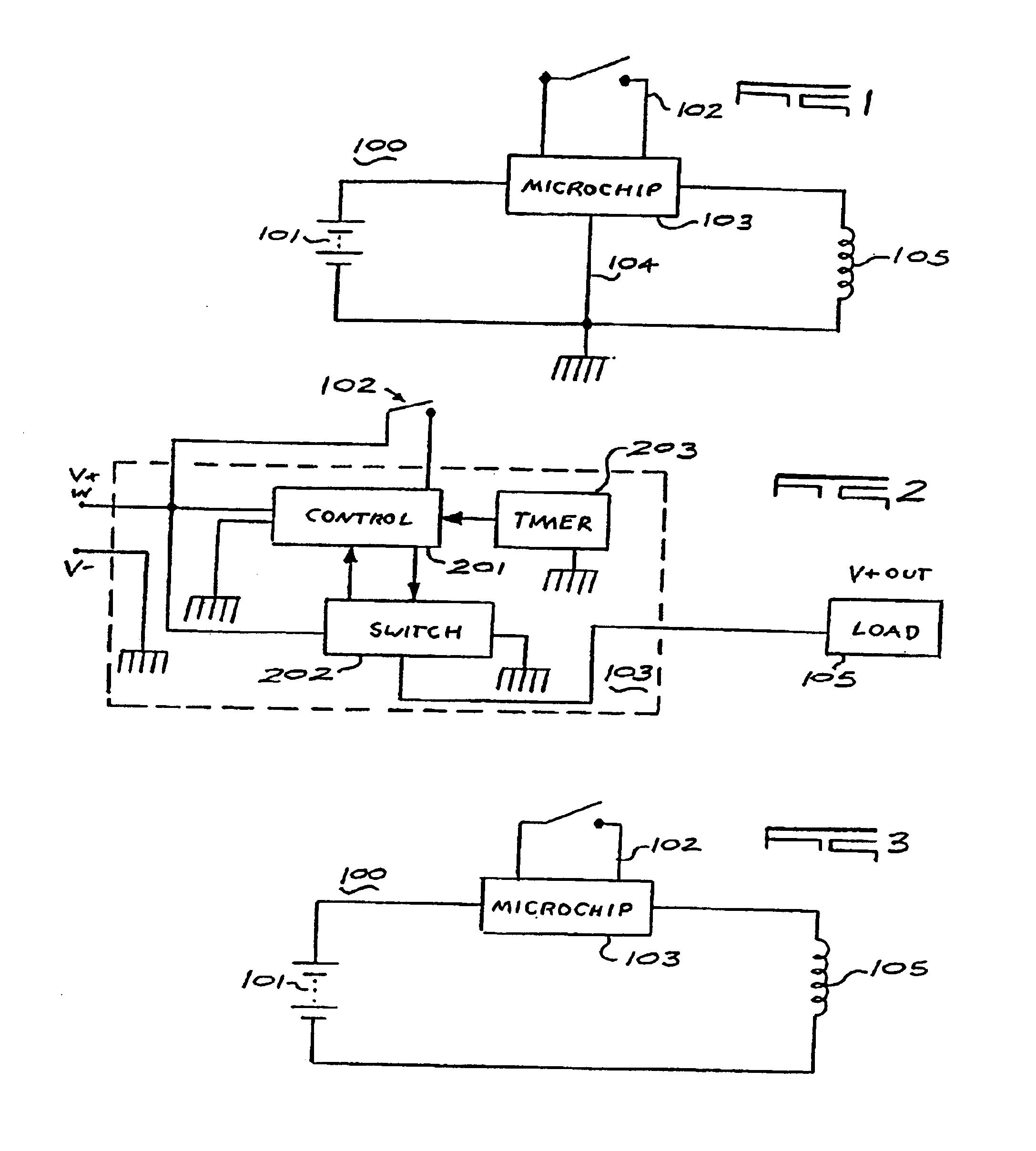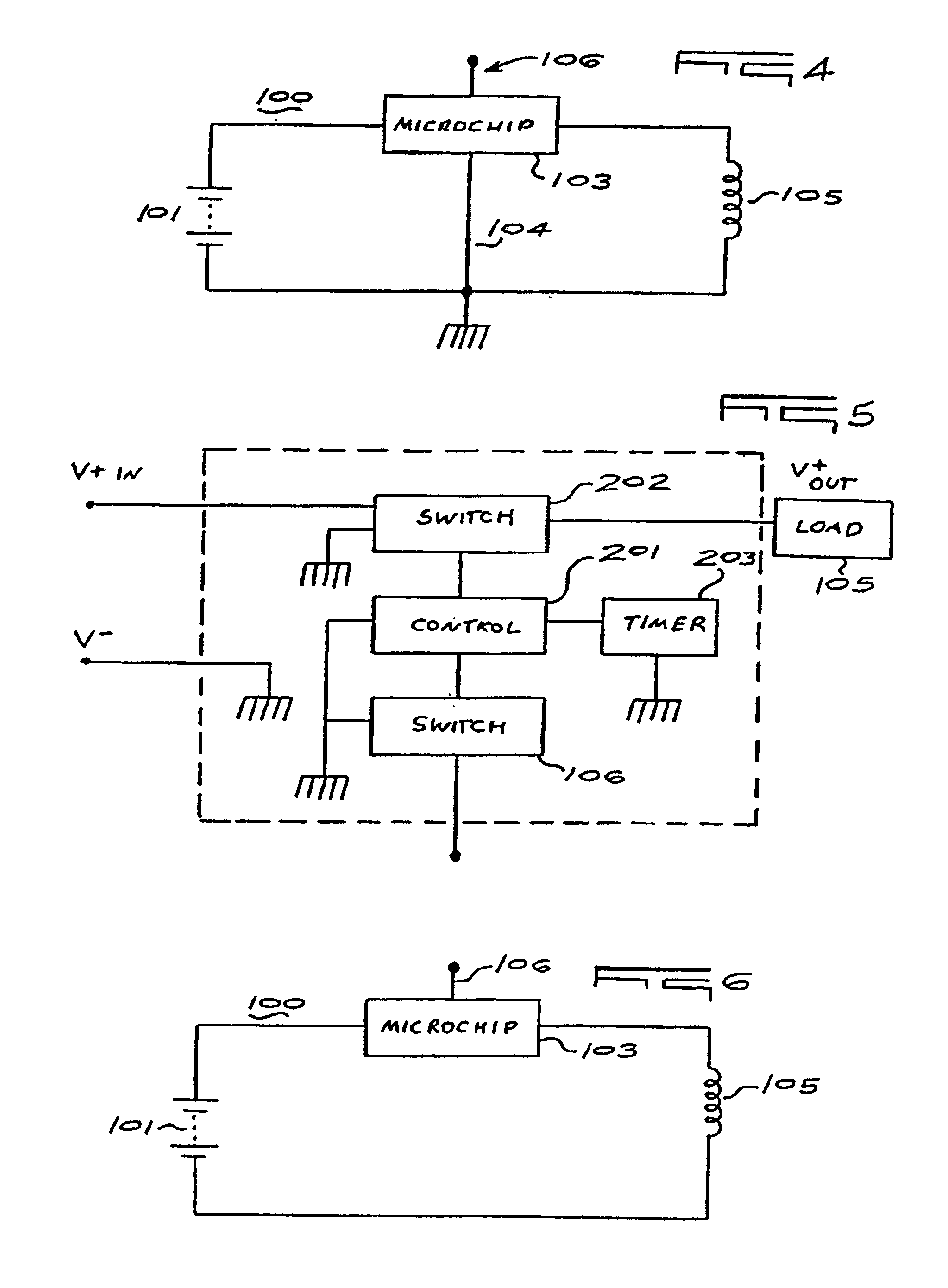Intelligent electrical switching device
a technology of intelligent electrical current and switching device, which is applied in the direction of sustainable buildings, lighting and heating apparatus, instruments, etc., can solve the problems of inability to control the electrical current of the flashlight, the flashlight will be mishandled, and the battery will, in a very short time, become exhausted, etc., to achieve convenient sealing, less cost, and more reliable
- Summary
- Abstract
- Description
- Claims
- Application Information
AI Technical Summary
Benefits of technology
Problems solved by technology
Method used
Image
Examples
Embodiment Construction
[0046]According to one embodiment or aspect of the present invention, and referring to FIG. 1, a schematic depiction of main circuit 100 of an electronic device, for example, a flashlight, is provided, wherein the device has a microchip 103 and a microchip controlled input activator / deactivator 102, for example, a push button or sliding switch. Main circuit 100 of the device is powered by a current supplied by power source 101. Power source 101 may be any power source, e.g. a DC battery, as is well known to those of ordinary skill in the art. While the following discussion is limited to specific electronic devices, that is flashlights, it is to be understood that the following description is equally applicable to other electronic devices including portable radios, toys, for example but not limited to battery operated cars, boats, planes, and / or other electrically powered toys.
[0047]Referring to FIG. 1, when an operator activates input push button or sliding command switch 102 to the...
PUM
 Login to View More
Login to View More Abstract
Description
Claims
Application Information
 Login to View More
Login to View More - R&D
- Intellectual Property
- Life Sciences
- Materials
- Tech Scout
- Unparalleled Data Quality
- Higher Quality Content
- 60% Fewer Hallucinations
Browse by: Latest US Patents, China's latest patents, Technical Efficacy Thesaurus, Application Domain, Technology Topic, Popular Technical Reports.
© 2025 PatSnap. All rights reserved.Legal|Privacy policy|Modern Slavery Act Transparency Statement|Sitemap|About US| Contact US: help@patsnap.com



